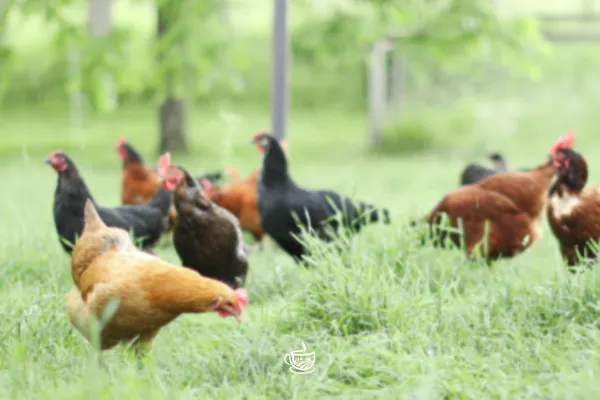
How We Use Chickens to Regenerate Soil
Forget fertilizers—our chickens are the real soil builders. Here’s how we use their natural behavior to boost fertility, control pests, and bring our land back to life.
How This Post Is Different… Organic vs Permaculture vs Regenerative
If you’ve been reading my blog for a while, you know I often write about plants doing the regenerative heavy lifting—like how guilds of herbs, flowers, and trees work together to heal the soil. This post is different because we’re spotlighting a different way…. Similar but different (yet they all can work together). Here’s the down and dirty:
Organic = the rule book.
No synthetic fertilizers, pesticides, or GMOs. It’s mostly about what you don’t use.
Permaculture = the design system.
Think of it as the blueprint for creating a self-sustaining ecosystem. Zones, guilds, stacking functions—it’s the “how to” of designing with nature’s patterns.
Regenerative = the comeback story.
It’s about actively healing the land: building soil health, restoring ecosystems, increasing biodiversity, and improving water cycles. The goal isn’t just to “do no harm,” but to leave the land better than you found it.
Hope, that makes sense, now how do the chickens fit into the regenerative cycle?
The Cluck Behind the Compost
When it comes to soil regeneration, chickens are more than eggs and entertainment. With the right system, they become scratch-happy composters, bug patrol, and mobile nutrient spreaders—all in one feathery package.
1. They Turn Compost Like Pros (Without a Fork)
We pile garden waste, straw, and food scraps in their run. The chickens scratch, peck, and stir it daily—naturally aerating the pile and speeding decomposition. Their droppings add nitrogen, turning waste into black gold.
Farm example: I once watched our hens reduce a stubborn pile of weedy hay into rich, dark compost in less than two weeks—something that would’ve taken me double the time with a pitchfork.
2. They Fertilize While They Forage
As chickens roam, they leave behind perfectly placed manure—rich in nitrogen, phosphorus, and potassium. We rotate them through garden zones or cover-cropped areas to let their droppings sink in and feed the soil directly.
Pro tip: No need for synthetic fertilizers when your flock is doing the work for free.
3. They Scratch Up Weeds and Pests
Their constant scratching loosens compacted soil, reduces weed seed banks, and disrupts pest life cycles. Before planting, we let them prep garden beds—it’s like free tilling with built-in pest control.
4. They Close the Loop
Food scraps feed chickens. Chickens feed soil. Soil grows food. It’s the regenerative loop in action, and it keeps our inputs low and our soil life thriving.
Our System at a Glance
Deep litter in the coop becomes rich compost
Fencing (ideally mobile) allows targeted grazing and fertilizing
Chickens rotated through garden areas in the off-season
Droppings collected for compost tea or direct application
Regeneration, Feathered
When managed well, chickens aren't just livestock—they’re land healers. Remember, we’re leaving it better than we found it. The chickens don’t just live on the farm—they work the farm. And the soil? It shows regeneration.
Want to bring more farm-to-cup wellness into your life?
Join our newsletter for seasonal tea tips, health-forward recipes, and behind-the-scenes farm stories.
Or sign up to volunteer at Clemson Tea Farm—you might just find yourself working alongside our feathered compost crew.
